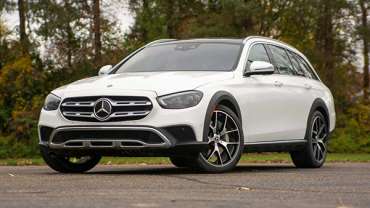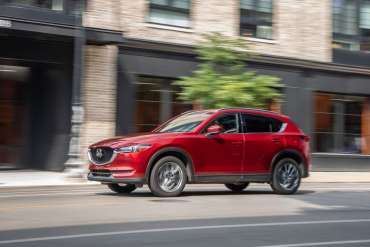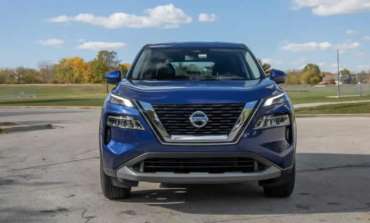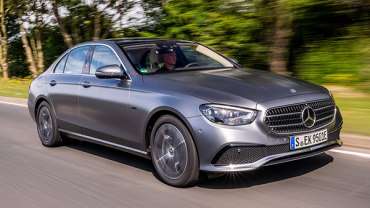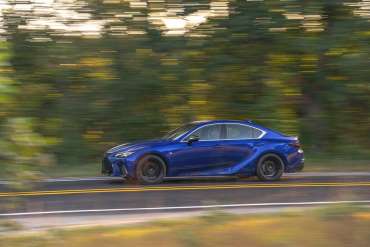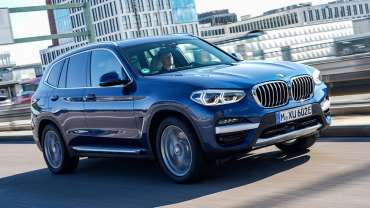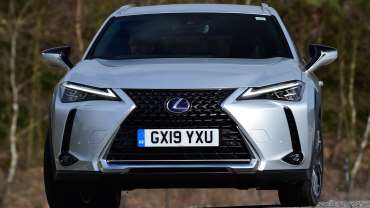
Worldcarblog.com
Mercedes-Benz E 450 All-Terrain 2021 Review
Once upon a time, station wagons dominated America’s roadways. They were the preferred mode of transport for frugal families road-tripping across the country until the arrival of the minivan. Today, wagons make up a sliver of new vehicle sales. That’s despite a surge in models that blur the lines. Traditional wagons exist and continue to appeal to consumers looking for something different, but high-riding, ruggedized long-roofs are becoming more and more common.
Subaru is the most successful purveyor of this sort of car, but Volvo has its Cross Country range and Audi is expanding the Allroad line with a new A6 Avant-based model. These vehicles attempt to marry the appeal of wagons – that they’re interesting, different holdovers of another time – with the air of capability that makes crossovers popular. For 2021, Mercedes-Benz is getting in on the action, discontinuing its E450 Wagon and introducing the E450 All-Terrain.
Packing a standard air suspension , a boost in ground clearance, and some rugged body mods (not to mention the same changes introduced on the broader E-Class line for 2021) does mean added capability. But even with these new touches, this high-riding wagon feels too much like its traditional counterpart in a few important ways.
Looking The Part
The E-Class All-Terrain’s new headlights, more prominent grille, and tweaked front bumper conspire to produce a more premium, attractive face than last year’s E-Class Wagon. And where the back of the revised E sedan looks worse than its predecessor, the designers left well enough alone on the wagon, retaining the slim, horizontal taillights and a wide-opening aperture with a low lift-over height.
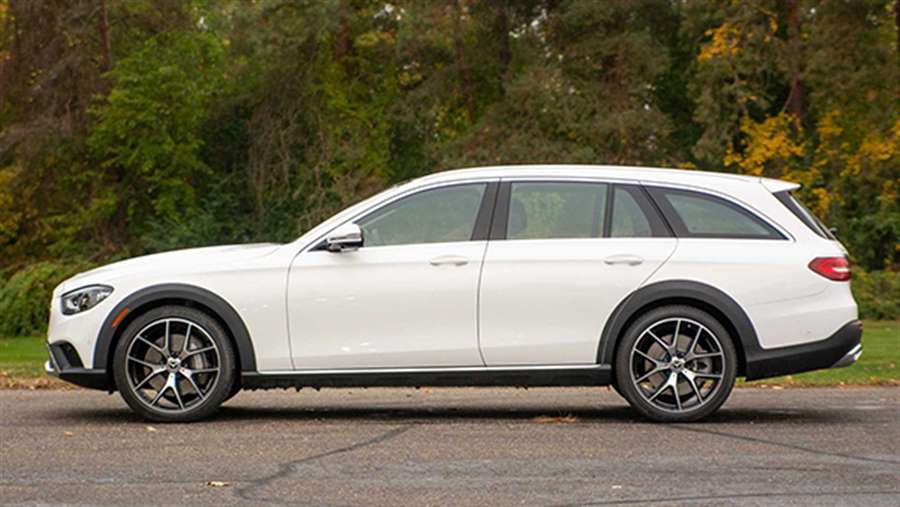
The All-Terrain differs from its predecessor, though, with prominent black plastic around its wheel arches and side sills. The 2021 model is no wider than last year – both cars span 73.7 inches, not including the mirrors – but there is a subtle flare to the arches that produces more visual mass. There’s also black plastic on the front and rear bumpers, although the protection on offer is minimal (this is no G-Wagen).
The car’s stance is more purposeful, although our tester left us scratching our head with its optional 20-inch wheels.
Completing the tougher look is a boost to the E450’s ride height. The now-standard air suspension offers 5.8 inches of ground clearance, 2.0 inches more than what you got from last year’s E450 Wagon. The car’s stance is more purposeful, although our tester left us scratching our head with its optional 20-inch wheels. They look good and are a visual benefit to the car overall, but big wheels and skinny sidewalls don’t give the impression of SUV-like toughness.
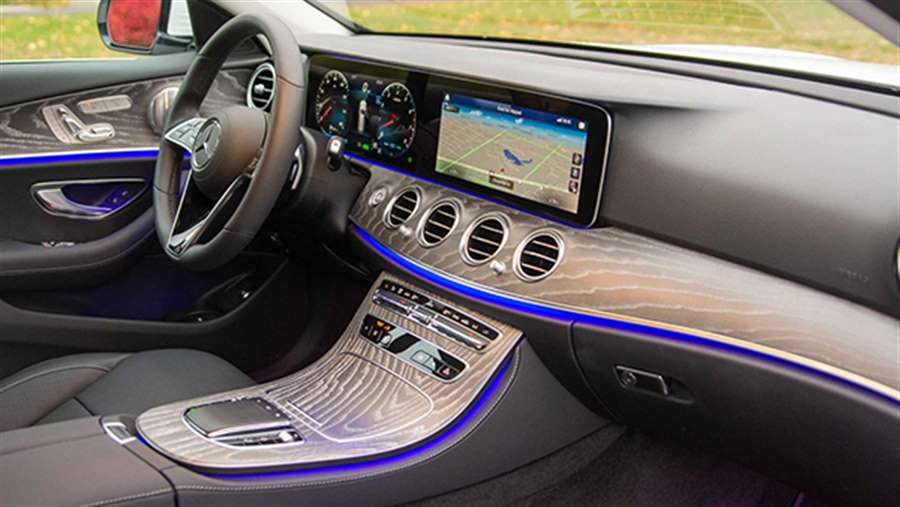
Mercedes made one significant change to the E-Class cabin, with every variant receiving a new steering wheel design. The company opted to replace physical buttons and scrollers with touch-capacitive controls. Some work, like the “buttons” that activate and adjust the cruise control. But the important controls – the volume slider and the directional pads for controlling the digital instrument cluster and infotainment system – tend to have a mind of their own.
Almost All Terrain
This is not a Mercedes problem, but these lifted wagons are rarely as capable as they look. In the E450 All-Terrain’s case, though, the bones are good. The air suspension allows up to an inch of height adjustment, and new Offroad and Offroad Plus driving modes, plus hill descent control, provide an easy avenue for tweaks to the suspension, stability control, and powertrain.
The chink in this car’s armor is, as is often the case, its tires. The E-Class is only available with 19- or 20-inch wheels with 245/45/19 or 245/40/20 tires, respectively. Our tester featured the larger option and was perfectly fine on smooth and paved roads. The soft air suspension soaks up abuse so well that you aren’t even aware you’re riding on rubber bands. But dirt roads are an anxiety-inducing experience, to the point that we can’t understand why Mercedes engineered dedicated off-road driving modes – they’re moot with the factory wheel/tire choices.
It’s a miracle the E450 survived our dirt-road session without a flat tire.
We integrated 90 minutes of dirt-road driving – typical stuff for rural Michigan – into our usual test loop, and it’s a miracle the E450 survived without a flat tire. Bumps that didn’t look all that significant sent a groan-inducing shudder through the body, preceded by the instantly identifiable clunk of a wheel accepting forces that the tire should handle. While it hurts the aesthetics, the first thing we’d do with an E450 All-Terrain is drop the wheel diameter to 17 or 18 inches and then fit the thickest sidewalls the car could accommodate without rubbing – there’d be a dramatic improvement in dirt-road comfort.
Still Works As A Wagon
Despite the All-Terrain treatment, the E450 still works as a suburban runabout. Packing a new engine for 2021 – a non-AMG version of the E53’s turbocharged, mild-hybrid straight-six – and standard all-wheel drive, this wagon offers innocuous performance around town. There’s 362 horsepower and 369 pound-feet of torque – identical to the E450’s old twin-turbo V6 – and while Mercedes isn’t publishing a zero-to-60 time, we’d wager it remains in the five-second range.
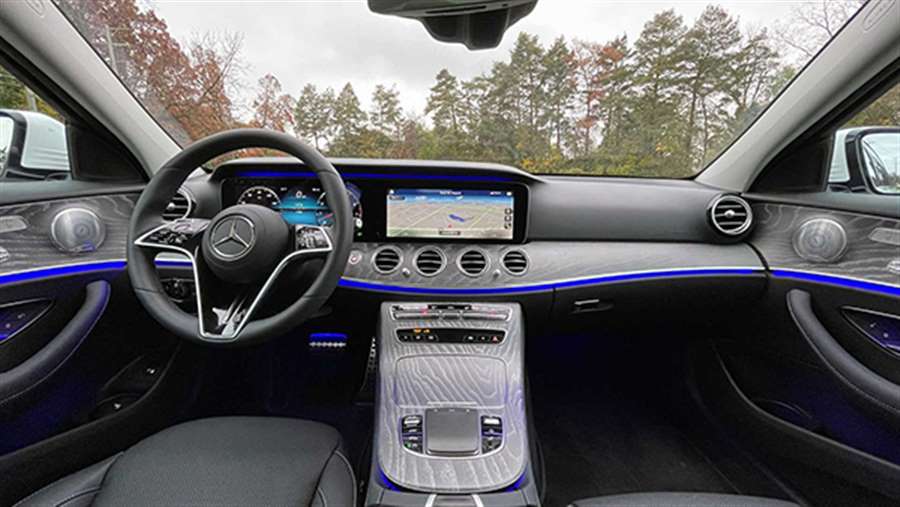
The 2021 E450 doesn’t feel any quicker than its predecessor, but the new mild-hybrid engine is far, far smoother. That’s partially down to the inline layout – arranging six cylinders in a row is inherently better than putting them in a V – but also thanks to the EQ Boost mild-hybrid system, which uses a 48-volt electrical architecture to power a compressor that immediately spools the turbocharger. The combo of these two things means that off the line, the All-Terrain accelerates like the more luxurious, refined car. The new engine is quieter, for a start, but what you hear is smoother and more pleasant, too.
Despite the All-Terrain treatment, the E450 still works as a suburban runabout.
Meanwhile, the added ride height has only a small impact on how the All-Terrain handles. There’s more body roll, which makes sense, but it’s easy to predict how the car will respond to inputs. Overall grip levels are high too, owing to the wildly inappropriate-for-an-off-roader Pirelli PZero rubber. This is an easy car to hustle about.
Price Is Still An Issue
Ultimately, and as was the case the last time we drove an E-Class Wagon, we’re still concerned about the cost of this variant and the limited number of configurations it’s available in. The All-Terrain only offers the 3.0-liter EQ Boosted straight-six, while its $67,600 starting price is over $10,000 more than a GLE 350 4Matic and $5,100 more than its nearest counterpart, the GLE 450.
Those points aside, the All-Terrain has one big pro we haven’t mentioned: exclusivity. Mercedes imports precious few wagons to the United States each year, making the E450 and its AMG counterpart, the E63, two of the company’s rarer vehicles. That hasn’t been enough to motivate customers in the past, but with a ruggedized alternative to the traditional wagon arriving in showrooms soon, it’s possible that Mercedes may see some more interest from American consumers looking for something different. Read more > https://mercedes-world.com/e-class/mercedes-benz-e-450-all-terrain-review
Source: mercedes-world.com
Our 2019 Mazda CX-5 Turbo Was Easy to Love
From its excellent road manners to its upscale interior to its perfect reliability over 40,000 miles, Mazda's compact crossover served us well.
You don't have to say "compact crossover" three times in a row to make one appear; the parking lot is already full of them. They've scared away most of their car counterparts, but it's crossovers like the Mazda CX-5 that make us think maybe the future isn't so spooky after all.
Our CX-5 arrived in the top Signature trim with flashy Soul Red Crystal Metallic paint and 19-inch dark-silver aluminum wheels. The leather-wrapped steering wheel and wood trim gave it a luxury feel despite its less than exorbitant price. The Caturra Brown interior combined good-quality dark dash materials with brown ventilated leather seats brought a very upscale finish to the cabin. A few accessories were added; all-weather floor mats went to good use, a rear bumper guard probably saved the CX-5 from a few blemishes, and a roof rack went largely unused.
A 250-hp turbocharged 2.5-liter four-banger and all-wheel drive come standard in Signature trims, but it's the 310 pound-feet of torque that gives the CX-5 an almost diesel-like power delivery. Print director Eric Tingwall pointed out, "This engine is tuned for a strong low-end tug from zero to 30 mph at about 50-percent throttle. When you floor the accelerator and ride it out through the relatively low redline, the engine feels a bit coarse and reluctant. I remember Mazda saying something about zoom-zoom, but this engine doesn't have any of that spirit." At 40,000 miles, however, the 2.5 did show a little more enthusiasm, delivering better acceleration times across the board.
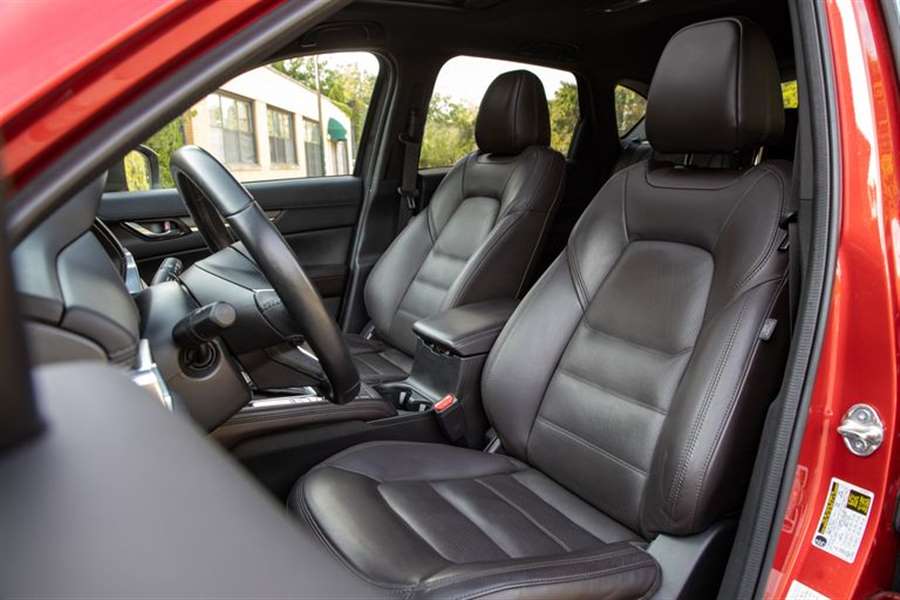
But that tuning makes sense for the small-crossover use case, which doesn't typically involve regular trips to redline. It does involve regular trips, however, and on that front the CX-5 was often passed over in favor of more capacious competitors. We found the CX-5 stylish inside and out and a pleasure to drive, but its tight cargo space and lack of towing capability explains why it was overlooked for family trips. There were several staffers who asked about it having a trailer hitch—no, it didn't—but even if it did, the CX-5 maxes out at a 2000-pound tow rating. Other long-termers with more cargo space, like the Honda Passport, were often selected ahead of the Mazda despite the CX-5 delivering a more upscale driving experience.
LOWS: Lack of cargo space and not the most fuel-efficient commuter.
The CX-5 completed its test without any hiccups or gaffes, despite being rummaged through by a would-be car thief. We took it to Mazda for six scheduled maintenance visits throughout its long-term test, regular 7500-mile services, and an additional stop right at 40,000 miles to replace the spark plugs. That cost $293, although at the same time the dealer noticed that we were wearing thin of rear brake pad and that those rotors were also warped. Add $574 to the normal-wear column. In terms of reliability, the CX-5 couldn't have been more consistent if it had taken a fiber pill every morning.
The most frequent gripes concerned the Mazda's tiny and slow infotainment system. Sometimes the menu would just freeze after startup or get stuck in a loading cycle when switching between menus. This system has since been upgraded for 2020 models, solving its lagginess. We've been in a new CX-5, and the larger 8.0-inch touchscreen is also a big improvement.
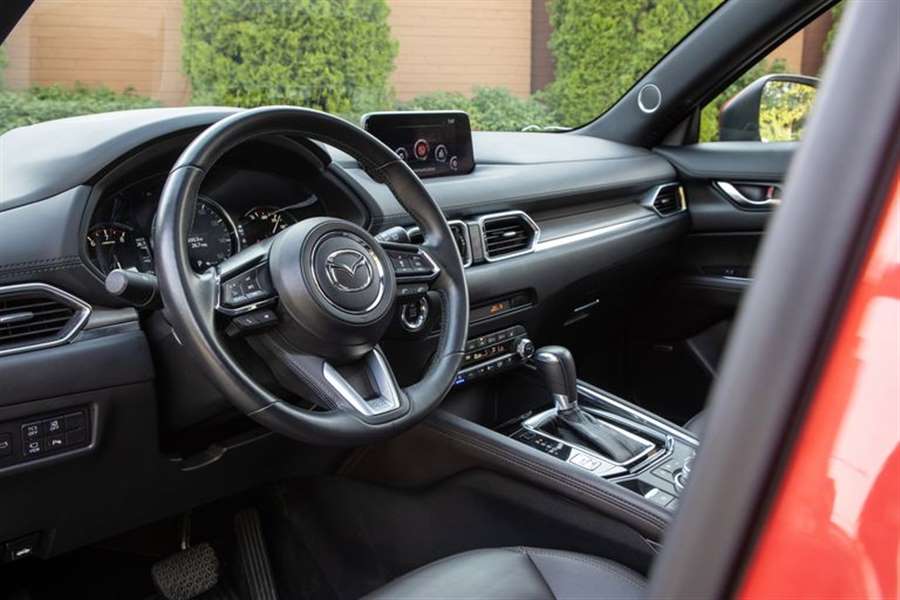
How much we like driving this 10Best-winning vehicle should not be diminished by how long it took us to reach 40,000 miles. We took delivery in March 2019 and only made it to 30,000 miles a year later, before quarantine started. It took another six months to knock out the last 10,000 miles. In contrast, our long-term Kia Telluride reached 10,000 miles in only its first three months, but its three rows and usable tow rating makes it far more friendly for a road trip with four or more people.
The CX-5 took us plenty of places, just nowhere very far from home. Most trips were local. It did a lot of commuter work (back when we were still commuting to work), and it ran a lot of errands. Assistant technical editor Maxwell Mortimer was the long-distance champ, venturing as far south as Tellico Plains, Tennessee, and driving 200 miles north of the office to Harrisville, Michigan for a camping trip. We averaged 24 mpg, matching the combined EPA-estimated mileage. We achieved 30 mpg during our 200-mile highway fuel-economy test near the 40,000 mile mark, which also matches the EPA's estimate, but it's still behind the all-wheel-drive Toyota RAV4, Nissan Rogue, and Honda CR-V. But we'd rather burn fuel in the CX-5.
After 40,000 miles we still appreciate the luxurious look and feel of the CX-5's comfortable leather seats, as well as its six-speed automatic transmission in a field rife with continuously variable automatics (CVTs). We wish its competition could step it up and offer the same effortless steering and controlled suspension as the CX-5—or that the Mazda could provide the cargo space of a Honda CR-V or Nissan Rogue. The perfect crossover doesn't exist, but we respect the CX-5's prioritization of the driving experience. Better to be really good at one thing rather than mediocre at everything.
Months in Fleet: 18 months Current Mileage: 40,206 miles
Average Fuel Economy: 24 mpg
Fuel Tank Size: 15.3 gal Observed Fuel Range: 360 miles
Service: $971 Normal Wear: $574 Repair: $0
Damage and Destruction: $0
30,000-Mile Update
The past 30,000 miles of our long-term test with the turbocharged Mazda CX-5 have been trouble-free, uneventful bliss. It’s been the type of ownership experience you’d hope for with any vehicle. There hasn’t even been a single unscheduled maintenance visit or factory recall yet.
The CX-5 has drawn some unwanted attention, though. One night, while parked at a C/D staffer’s apartment complex, someone got into the presumably unlocked CX-5 and rummaged through the glove compartment and center console but left without stealing anything—and we had a bag of tools and a USB cord in there. It’s possible the would-be thief was scared off by something, but it makes us think that this CX-5 is a lucky one.
The 250-hp turbocharged 2.5-liter inline-four under the hood remains a staff favorite. That said, there are a few entries in the logbook that criticize the moment of turbo lag that exists at low rpm. And some staff members complain that this engine lacks power when you twist the tach past 5000 rpm. Quipped deputy reviews editor Tony Quiroga, “This engine makes low-end power and runs out of enthusiasm at high revs like a Fox-body Mustang ‘5.0’ V-8. The quotes are there of course because that engine is actually a 4.9-liter.”
We continue to be grateful that Mazda employs a six-speed automatic instead of a CVT. Shifts are crisp and quick, and the CX-5 never suffers from the dreaded droning sound that CVTs utter under acceleration. We do enjoy the faint sighs of the turbocharger’s pressure relief valve recirculating air on most shifts.
To celebrate his completion of a two-week quarantine after returning from a press trip in Italy, assistant technical editor Maxwell Mortimer took a 1400-mile road trip to the Tennessee–North Carolina border just before Michigan’s shelter-at-home decree hit. He writes that “the CX-5 is awesome. I can’t help but keep comparing its level of entertainment with a Volkswagen GTI's.”
Senior editor Joey Capparella also took it on a trip to Tennessee, where he noted the CX-5’s unexceptional highway fuel economy: “I had to fill up about every 350 miles or so. Out of boredom, I tried to get the low-fuel warning light to show zero, but I chickened out at 17 miles.”
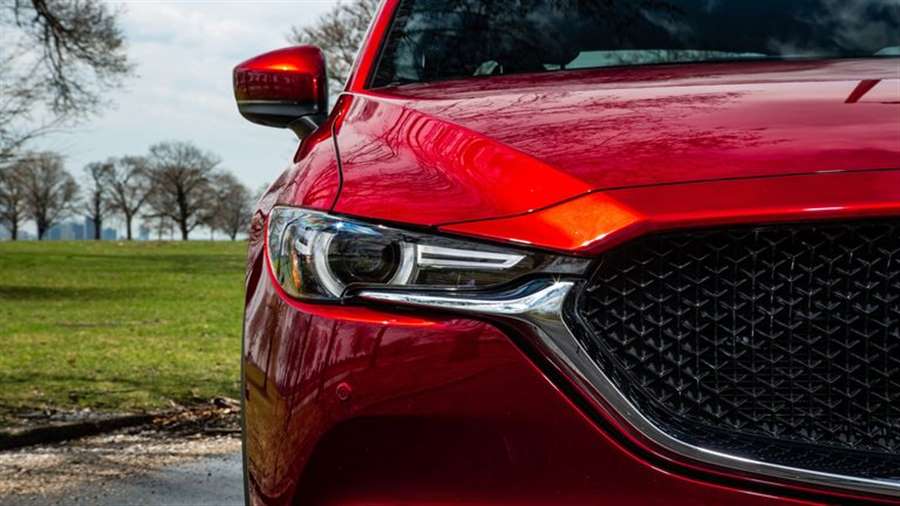
The CX-5 appears to have a very conservative fuel gauge, though, because when Capparella compared the tank size with the quantity he pumped, the Mazda had over two gallons left in the tank. During Capparella's trip, his average fuel economy registered 29 mpg, or 1 mpg short of what an identical CX-5 managed during our 200-mile highway fuel-economy test. Had he wanted to, Capparella could have likely pushed it beyond 400 miles before having to seriously start looking for a gas station.
Since our last update, we’ve maintained a steady 24 mpg in combined driving. Currently, the CX-5 is driving on Nokian Hakkapeliita R3 SUV winter tires, which have taken the worst the winter could throw at them. Now that spring is here, we’ll be swapping to the original equipment: Toyo A36 all-season rubber.
Inside, the nappa-leather-trimmed driver’s seat is beginning to become a bit glossy as more and more butts slide in and out of it. Small creases and wrinkles are appearing, too. Left alone and in the warmest setting, the heated seats reach uncomfortably hot temperatures. Within minutes, you end up turning them off for fear of searing yourself. The 7.0-inch touchscreen is a bit frustrating, as it often lags and takes a long time to boot up when you turn on the CX-5. You find yourself waiting for it to load, stuck watching a gear icon spin on the screen for about 20 seconds. It’s one of the few gripes we have, though, as the rest of the interior has an upmarket design and feel.
We still have 10,000 miles to go before our loan ends. We'll see if the CX-5 can maintain its perfect reliability record. We look forward to the day when we can take it for another road trip. Right now, we’ll have to settle for quick runs to the grocery store.
Months in Fleet: 13 months Current Mileage: 30,375 miles
Average Fuel Economy: 24 mpg
Fuel Tank Size: 15.3 gal Observed Fuel Range: 360 miles
Service: $574 Normal Wear: $0 Repair: $0
Damage and Destruction: $0
20,000-Mile Update
It has taken nearly a year for our long-term Mazda CX-5 to cross the halfway point in its 40,000-mile stay with us. But that gradual mile accumulation is not for the Mazda's lack of goodness as a compact SUV. While we're not petty enough to shy away from the CX-5's handsome styling, excellent driving character, and trouble-free reliability because of its irksome infotainment system, that aging interface is about the only thing we have been able to consistently criticize.
Indeed, our Mazda is so agreeable that most of the very few entries in its logbook center on the small 7.0-inch infotainment display and both its slow response and less than seamless operation. "It's irritating to have to navigate into menu structures just to browse radio stations," wrote print director Eric Tingwall. "A dedicated seek or tuning control is desperately needed. I normally like these control-knob-based systems, but if it's going to be this clumsy, I'd rather just use the touchscreen." While Mazda has enlarged that touchscreen to 8.0 inches in higher trim levels as part of its updates to the CX-5 for the 2020 model year, this operating system still feels clunky and dated compared to the brand's newer setup found in its Mazda 3 and CX-30 models.
Still, after more than 20,000 miles and no shortage of fresher competitors to sample, the CX-5 continues to impress with its optional 250-hp turbocharged 2.5-liter inline-four. While that engine gains an additional 10 lb-ft of torque to 320 lb-ft for 2020, we don’t miss it on our 2019 model. It might not be the quickest in the compact-crossover segment—that would be the new Ford Escape with its optional turbo 2.0-liter four—but the CX-5 turbo's smooth, responsive power delivery impart to it a little of the MX-5 Miata's spunky personality. We're also pleased with the Mazda's average fuel economy of 24 mpg, spot on with its EPA combined estimate.
Additional satisfaction comes from the CX-5's six-speed automatic transmission, which shuffles gears smartly and effectively enough, especially in Sport mode, that we never feel shorted by the lack of paddle shifters on its steering wheel. Compared to the often mushy and droning continuously variable automatic transmissions found in many of the CX-5's peers, this six-speed 'box is refreshingly well tuned for both lazy and spirited driving. Staffers continue to levy similar praise on the precise and direct steering, the sorted body control that resists disturbances from Michigan's shoddy roads, and the pleasantly upscale interior of our top-spec Signature model.
The CX-5 also has been wholly reliable. Unlike many of our other current long-termers, not even a flat tire or a cracked windshield has interrupted the Mazda's clean streak. Our only visit to the dealer since our last checkup was for scheduled maintenance at around 21,000 miles, which amounted to $162 for an oil and filter change, cabin air filter replacement, and tire rotation.
Employed as a utility vehicle, the CX-5 is as capable as it is enjoyable to drive. Road warrior Scott Olman was able to fit a dining room table and six chairs in the back of the Mazda with both of its rear seats folded, which is pretty respectable in any compact ute. The colder temperatures of winter in Michigan also have helped us appreciate the effectiveness of the CX-5 Signature's standard heated front seats and steering wheel, although a shortage of snow thus far has meant we've had little opportunity to test out the excellent foul-weather traction of the Nokian Hakkapeliitta winter tires we've installed. There is still plenty of time for more of the white stuff to fall, though, and for us to put many more miles on the CX-5.
Months in Fleet: 11 months Current Mileage: 22,636 miles
Average Fuel Economy: 24 mpg
Fuel Tank Size: 15.3 gal Observed Fuel Range: 360 miles
Service: $427 Normal Wear: $0 Repair: $0
Damage and Destruction: $0
10,000-Mile Update
So far, the road to 40,000 miles in our Mazda CX-5 has been smooth, even as winter descends on these Michigan roads. There's nothing shocking about compact crossovers, other than the rate at which consumers keep buying them. So far, the CX-5 has performed as expected, with a few minor annoyances sprinkled on top.
As part of our current 17-car long-term test fleet, the Mazda CX-5 conceals its handsome face behind our more interesting, and sometimes problematic, vehicles. It's easy to be overshadowed by, say, our 362-hp twin-turbo Mercedes wagon, or a long-termer that shall go nameless but is tethered to the future of driverless cars and also has a fart button. (Yes, it's our Tesla Model 3.) The CX-5 is like a comfortable knee brace: you don't want to wear it, but when you do it's not so bad, because it's good at what it's supposed to do.
Our long-termer has the new-for-2019 250-hp turbocharged 2.5-liter inline-four. This engine is only available with all-wheel-drive models. Just after we ordered ours, Mazda added a 2.0-liter diesel engine option. The price of our all-wheel-drive Signature trim CX-5 is $39,850, which got us a Bose sound system, adaptive headlights, a heated steering wheel, heated front and rear seats (ventilated in front), and a 360-degree parking camera. The options on ours put it far from the $25,395 CX-5's base price and closer in price to the Jeep Cherokee or the GMC Terrain Denali.
Our experience with the turbocharged engine has generated few comments, which is a good thing. If engineers can create something to keep automotive journalists from complaining, they should box it and sell it to the masses. Mazda appears to have done just that. The new turbo engine emits a noticeable moan. The noise is somewhat expected for an engine that can send the CX-5 from zero to 60 mph in only 6.1 seconds. We've found the CX-5's 187-hp base engine feels underpowered—or, in other words, boring. Which is an adjective we would use to describe most patients in the hospital wing of compact crossovers. Our CX-5 wishes them a full recovery.
That isn't to say our romance with the CX-5 has been perfect. An overwhelming number of entries in the CX-5's logbook cry over slow infotainment loading times. After startup, several staffers were terrorized with the inability to change the SiriusXM channel from E Street to Fly FM fast enough. The 7.0-inch touchscreen loads at the same rate that old hips dance to Springsteen. On occasion, SiriusXM suffered from repetitive lost-signal errors, a problem annoying enough that one of us said it would prevent them from buying a CX-5.
Another common bruise in the logbook was the low-res camera. The 7.0-inch touchscreen is already barely larger than phones tagged XL, but the camera quality was deemed poor by three staffers who had driven the vehicle long distances. The longest trip was an 800-mile weekend journey by testing director Dave VanderWerp, who was unimpressed by the CX-5's driver-assist technology. The absence of lane centering means that when the CX-5 begins to wander from its lane, it doesn't automatically correct and nudge the car back to safety. The CX-5 just buzzes, which isn't much help compared to some of its cheaper rivals with similar assistance tech.
A fresh set of Nokian Hakkapeliitta R3 winter tires came in handy earlier this week, when the first major snowfall hit the Midwest. Senior editor Joey Capparella wrote: "These Nokian winter tires feel pretty unstoppable. The heated seats and steering wheel get nice and toasty." Meaning staffers looking forward to working from home on snow days should not take the CX-5 the night before.
The CX-5 has been back to the dealership twice, but only for routine maintenance to change engine oil, rotate the tires, and for inspections at the 7500- and 15,000-mile marks. The cabin air filter was also changed, but other than that, our CX-5 has been trouble-free.
Through its first 10,000 miles, the CX-5 has not been the first pick by staffers rushing to lunch on Taco Tuesday. Not because it's bad, but because it's just fine. Now that we've entered snow season here in the mitten state, we'll be monitoring its competence in dealing with Siberian conditions and its ability to whisk us to warmer, sunnier climes.
Months in Fleet: 8 months Current Mileage: 16,331 miles
Average Fuel Economy: 24 mpg
Fuel Tank Size: 15.3 gal Observed Fuel Range: 360 miles
Service: $265 Normal Wear: $0 Repair: $0
Damage and Destruction: $0
Introduction
Mazda has few obvious problems, but if prodded to highlight some, we'd cite weak brand recognition in the United States and a shortage of fun paint colors, particularly for the MX-5 Miata. If that sounds as if we're reaching, well, we are. The automaker's products are so uniformly likable that finding things to gripe about takes some pedantic effort. Mazda is also pushing hurriedly upmarket, a development that is as easily seen through the lens of the CX-5 crossover as it is in any of Mazda's recent products.
Like the recently updated Mazda 6 sedan, CX-9 SUV, and all-new Mazda 3 sedan and hatchback, the CX-5 stands a head or two above similarly priced mainstream competitors, in this case, the Honda CR-V, Toyota RAV4, and Chevrolet Equinox. The brand enjoys an enviable quirk: More than half of its sales mix, model for model, consists of the higher trim levels. Mazda has taken this to mean that buyers can and want to pay more for their vehicles, which has spurred it to add ever more deluxe Grand Touring Reserve and Signature trims above the previously top-dog Grand Touring spec on some models, the CX-5 included. We've taken the same development as license to sign up for a 40,000-mile long-term test in a loaded 2019 CX-5 in range-topping Signature trim. We for sure wanted to get the newly available turbo 2.5-liter inline-four in our long-termer, and the only way to do that is with the Grand Touring Reserve or Signature trim level. The lesser Sport, Touring, and Grand Touring trims make do with a naturally aspirated 2.5-liter. And we're not above spoiling ourselves with a top-spec example.
So what does a compact Mazda crossover costing BMW money deliver? For starters, the impression that it should cost BMW money. The CX-5 looks, inside and out, like something that belongs in the compact-luxury-SUV segment. It's mostly true, even at the CX-5's $25,395 starting price, and particularly so on the $37,935 Signature trim. Adding our test car's gorgeous $595 Soul Red paint, $70 cargo mat, $125 floor mats, $400 backlit doorsill accents, $125 rear bumper guard, $250 retractable cargo cover, and $400 roof rack rails brings the final tally to just $39,900. This, we should point out, is for the gas-powered Signature; after we took delivery of our test car, Mazda introduced a diesel engine option available only on the Signature trim. Pricing with that engine starts at $42,045.
LOWS: More people should know what Mazda is.
Mazda includes a number of features that push competitors' nicer trim levels toward the same $40,000 mark, though none of those vehicles does as good an impression of a near-luxury product. (We're looking specifically at the GMC Terrain Denali and Jeep Cherokee, which cost $42,670 and $43,150 when equipped similarly to our CX-5 Signature.) The Signature brings as standard equipment some active-safety gear that's optional on several competitors, including automated emergency braking, adaptive cruise control, blind-spot monitoring, rear cross-traffic alert, and lane-departure warning.
Also standard on the Signature: lovely Caturra Brown nappa leather seating, real wood trim, a Bose audio system, dual-zone automatic climate control, power-folding door mirrors, adaptive headlights that point into corners, a power liftgate, power-operated and heated front and rear seats (ventilated in front), a heated steering wheel, a 7.0-inch touchscreen that can also be controlled via a central control knob, navigation, a 360-degree parking camera, front and rear parking sensors, and that aforementioned turbo four, which cranks out 250 horsepower. There are no major options offered beyond a few accessories.
The 2.5-liter in lesser CX-5s makes 187 horsepower, and all-wheel drive is a $1400 upcharge on Sport, Touring, and Grand Touring models. The turbocharged CX-5s are sold only with all-wheel drive. Like every modern, automatic-transmission Mazda, the CX-5 uses the brand's slick-shifting six-speed unit.
The combination of a turbo gasoline engine and all-wheel drive delivers a 6.1-second zero-to-60-mph time and punchy acceleration at most speeds (certainly stronger than with the base gas engine). More of a huffer than a screamer, the turbo four shoves the Mazda along on a wave of low-end torque. It might not be thrilling in the "zoom-zoom" sense, but Mazda doesn't lean on that phrase for marketing anymore, so let's not dwell on the idea that a compact crossover's engine needs to feel racy in order to be wholly effective. For now, we're calling the power delivery a possible hang-up when set in the Mazda brand's predominantly sporty context; we'll deliberate further over the next 40,000 miles. So, stay tuned as we live with our luxurious Mazda day in and day out and see whether our early positive impressions of its smooth ride, quiet interior, and fine road manners are affirmed or challenged.
Source: caranddriver.com
2021 Nissan Rogue Review: More Steps Forward Than Backward
The verdict: The redesigned 2021 Nissan Rogue adds much-needed driving refinement, though it comes with a bothersome side of ride firmness.
Versus the competition: Return shoppers will miss the outgoing Rogue’s soft ride, but firm suspension tuning never stopped a compact SUV from selling like gangbusters. Other aspects run the gamut, and our overall impression is two steps forward, one step back.
Redesigned for 2021 with running lights spaced high above the headlights — a look popularized by the old Juke and, now, a smattering of Hyundai models — the Nissan Rogue comes in four trim levels: S, SV, SL and Platinum. Each offers front- or all-wheel drive; compare the trims here or stack up the 2021 and 2020 Rogue here. Don’t confuse it with the Rogue Sport, a smaller model based on a separate platform. All trim levels pair a 2.5-liter four-cylinder engine with a continuously variable automatic transmission. We evaluated a Rogue SV AWD.
Improved Road Manners, Mostly
Competitors steadily surpassed the outgoing (2014-20) Rogue in the all-important battleground of ride and handling. When we compared Nissan’s compact SUV against the field in late 2017, it ranked mid-pack in ride quality and last, by a mile, in handling. The redesigned Rogue makes significant strides on the latter front, with a quick enough steering ratio for precise directional adjustments as you negotiate sweeping on-ramps. Nissan dialed back much of the prior generation’s nose-heaviness and numb steering, too. Steering and dynamics aren’t exactly towering strengths for the new Rogue, but they’re far from liabilities.
Unfortunately, that comes at a cost: The suspension introduces a degree of impact harshness over potholes and sewer covers that the outgoing Rogue dispatched with minimal complaint. Nissan says suspension tuning is the same across all trim levels, and our SV test car had 18-inch wheels (S trims have 17s, but the SL and Platinum have 19s, which may ride harsher still). Overall isolation and body control are fine, but the shock firmness is puzzling, given the Rogue’s comfort-oriented history. Perhaps Nissan benchmarked the current-generation Honda CR-V and Toyota RAV4, two popular but firm-riding rivals. In any case, the pendulum has swung both ways at Nissan: The recent Sentra redesign stays fittingly soft, while the current-generation Altima skews firm.
The 2021 Rogue gets the same 2.5-liter four-cylinder engine from that Altima (here it makes 181 horsepower and 181 pounds-feet of torque), rejiggered from an earlier 2.5-liter that preceded it. Paired with a CVT that raises revs fast enough from a standing start, the 2.5-liter provides enough power around town but needs most of its reserves to reach highway speed, especially with multiple occupants aboard. If you need more power while already in motion, the CVT again increases engine rpm quickly enough. It’s slightly quicker in a driver-selectable Sport mode, but that setting keeps revs awkwardly high all the time — not simply hastening the transition, as effective Sport modes often do.
The Interior: Quality and Utility
Rife with all the trending elements in today’s automotive interiors, the Rogue’s cabin features a floating touchscreen, electronic gear selector and high center console, plus lots of stitched dash and door surfaces. Quality mostly lives up, with generous padding where your arms rest and a sturdy grade of fabric upholstery in our test car. Cost-cutting becomes evident once you get to the backseat — the norm in this class, though a few rivals improve on it. Leatherette (vinyl) and leather are both optional, and upper trims pad where your knees meet the console. That’s a useful provision, as its bulky design inhibits some lateral space. Nissan’s spring-loaded electronic gear selector feels a bit rickety to operate, but it’s a rare blemish among otherwise high-quality controls.
Interior storage is in good supply. With no mechanical linkage to select gears, the center console has a medium tray underneath, plus multiple cubbies around the cupholders. Gone is the outgoing Rogue’s deep glove compartment, but the other nooks more than make up for it. Unfortunately, utility behind the front seats takes, well, a slight backseat. The rear seats lose the outgoing Rogue’s 40/20/40-split, reclining functionality and sliding adjustment, the latter of which allowed owners to maximize cargo or passenger space; now the seat just reclines in a traditional 60/40 split. Legroom is fine, but the bench sits a bit closer to the floor than before, such that some adults may find their knees uncomfortably elevated.

We measured 17.1 cubic feet of cargo volume behind the backseat in our Rogue SV, and that’s with a fixed cargo floor. SL and Platinum grades get Nissan’s Divide-N-Hide cargo system, which has a dual-level load floor that should add slight volume. In any case, the SV’s room lands within fighting range of others (we measured 18.7 cubic feet in a Toyota RAV4 Prime, for example). Note that it comes by way of our independent accounting of cargo space, a practice we’ve instituted amid inconsistent methodology from manufacturer-reported volumes.
Technology and Safety
The Rogue’s standard 8-inch touchscreen has Apple CarPlay and Android Auto, both via tethered connections, and two USB ports. Tech options include two additional backseat USB ports and an upsized (9-inch) touchscreen with wireless CarPlay, plus 12-inch virtual gauges, wireless smartphone charging and a Bose premium stereo. (Android Auto is strictly a tethered connection; no wireless connectivity is available.)
As of this writing, third-party crash tests have yet to be published for the 2021 Rogue. Standard safety features include automatic emergency braking with pedestrian detection as well as blind spot and lane departure warning systems. Nissan’s ProPilot Assist system, included on the SV grades and up, incorporates adaptive cruise control with hands-on lane-centering steering, both of which work from a stop all the way up to highway speeds. Note that this isn’t the automaker’s second-generation ProPilot Assist with hands-free lane centering, which debuted on the new Ariya SUV.
Features and Pricing
Including destination, the 2021 Rogue starts just under $27,000. That’s a stone’s throw from its predecessor, and in the thick of its rivals’ starting prices. Characteristic of the class, it’s well equipped on the safety and multimedia fronts but basic beyond that: Rogue S shoppers can expect manual seats, cloth upholstery, manual climate control and basic keyless entry.
Climb the trim levels, and you can get a panoramic moonroof, hands-free power liftgate, vinyl or leather seats, keyless access, power front seats (though without a passenger height adjustment), tri-zone climate control and heated seats in both rows. A loaded Rogue Platinum AWD tops out in the high $30,000s, which is also competitive.
Naturally, the Rogue’s improved agility is a modest adjustment to what it once was; this is no sports car masquerading as an SUV. The improvements come at some expense to comfort, and the utility setup takes half a step backward. But the SUV takes more steps forward, and it doesn’t come with a huge jump in price. In balance, it’s a notably better SUV than the one it replaces — something shoppers who don’t prioritize comfort or utility can appreciate.
Source: cars.com
Mercedes-Benz E 220 d 2021 Executive Car Of The Year
If you were going to list the key attributes any executive saloon needed to posses, it would read like a checklist for the new Mercedes E-Class: style, space, comfort and an element of luxury, efficiency, performance and technology.
The updated E received a mid-life boost earlier this year, which elevated it to the top of its class. As well as some styling tweaks designed to bring its look into line with newer models of the family, Mercedes’ revised MBUX infotainment system, complete with twin 12.3-inch screens, was key to the upgrades.
With more connectivity, sharper graphics and features such as augmented reality for the sat-nav, it’s as advanced as in-car tech comes. That’s supported by the availability of Mercedes’ excellent semi-autonomous driver aids – which will help take the strain off during the long motorway trips cars like this routinely make – as well as a strong level of safety tech, because these saloons (the E-Class is also available as an estate, coupé or convertible) double as family transport for many buyers, too.
There’s pure-diesel power, mild-hybrid petrol or a pair of plug-ins available. The E 220 d is still the entry point, and a fine power unit with even more refinement, but for business users the E 300 e (petrol) and E 300 de (diesel) EQ Power plug-ins could be of more interest, with a claimed all-electric range of 34 miles for both cars and efficiency of up to 235.4mpg for the diesel PHEV. When you consider that it takes just 90 minutes to recharge its 13.5kWh battery using a home wallbox, it shows how far this class has come.
The E-Class rides as well as ever, absorbing bumps with a languid flow to its damping to deliver plenty of comfort to occupants. While the saloon handles well enough, it’s the refinement and quality the Mercedes offers that’s key.
New versions of rivals are set to hit the market soon, with updated plug-in powertrains, so the Mercedes faces a stiff challenge in the future, but the ability that has cemented the E-Class in top spot in this Executive Car class means it has the potential to reign supreme for some time to come.
Our choice
Mercedes E 220 d AMG Line (£41,555)
AMG Line trim offers style and substance, with nav, Apple CarPlay and Android Auto as part of the dual-widescreen infotainment display, plus heated seats and wireless phone charging on top of some strong safety kit. The 220 d engine combines refinement, punch and efficiency, claiming economy of 53.3mpg.
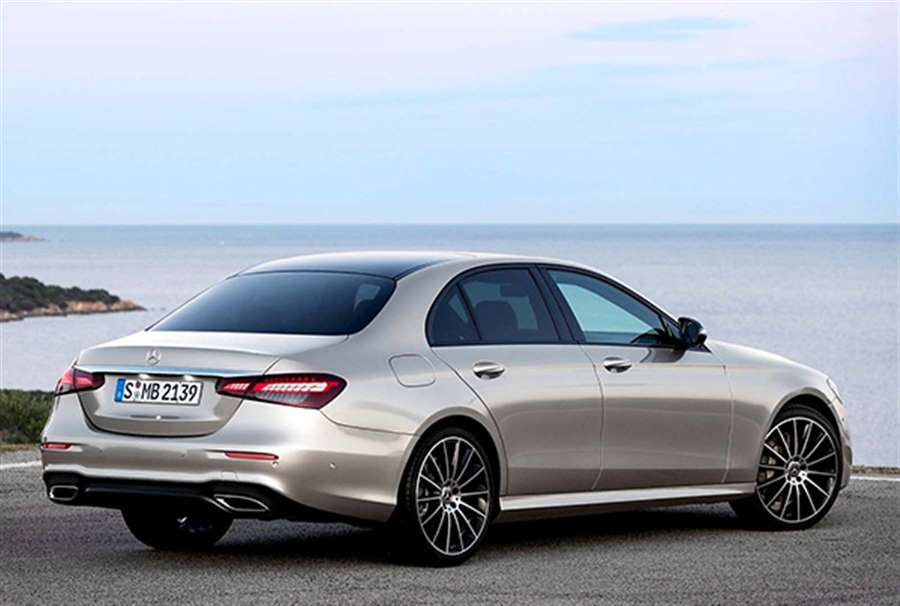
Commended
Audi A6
With a plug-in model joining the range, the high-tech, well built and spacious A6 delivers an incredible breadth of ability across the range. Audi’s usual level of infotainment and quality means the A6 is a tempting alternative to the E-Class.
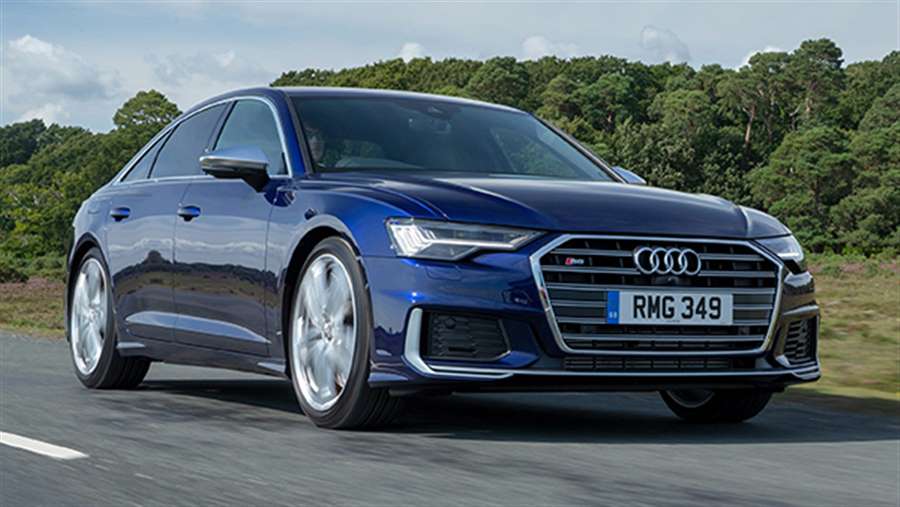
Volvo S90
If you don’t want a German saloon but do like the idea of electrification, with plug-in hybrid power offering huge performance and efficiency potential, the Volvo S90 offers a slice of Scandi cool with real eco appeal, too.
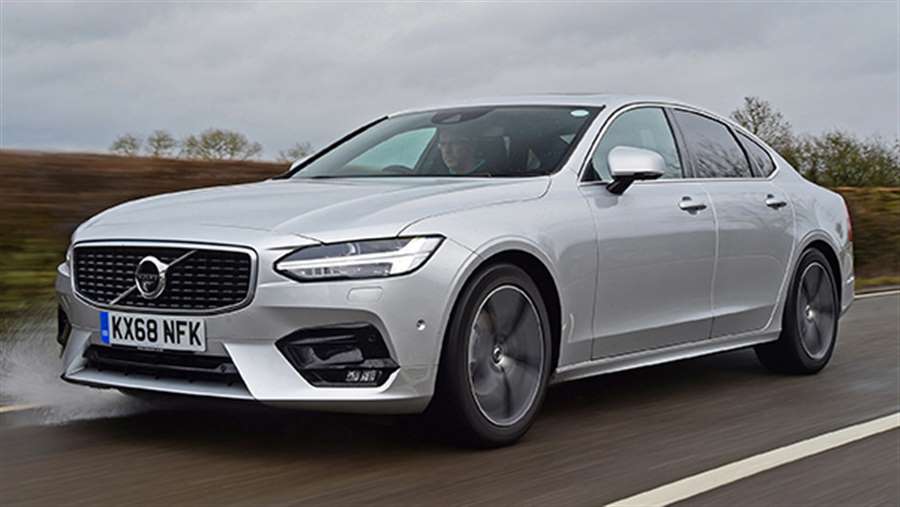
Source: mercedes-world.com
Tested: 2021 Lexus IS350 F Sport Deserves a Better Engine
Lexus's updated IS350 F Sport has the looks to kill but it doesn't deliver sufficient thrills.
Sedans are dead, at least that's the conventional wisdom. The trend toward crossovers has seemingly placed four-door cars on death row, but while they're down, they're not out of appeals. New sports sedans are still being introduced. Lexus's updated 2021 IS350 F Sport is just such a sedan, but is it good enough to find enough buyers to save itself from the gallows?
First introduced for the 2014 model year, the third-generation Lexus IS has been reformed by a second mid-cycle refresh in an attempt to keep up with newer offerings like the BMW 3-series, Cadillac CT4-V, Genesis G70, and the still lovely Mercedes-Benz C-class. Designers went to work on the sheetmetal with a smoothed-out profile, squinty headlights, and following the trend, an even larger grille. It's a killer-looking sedan, especially when dressed in the IS350's standard F Sport garb and blacked-out trim.
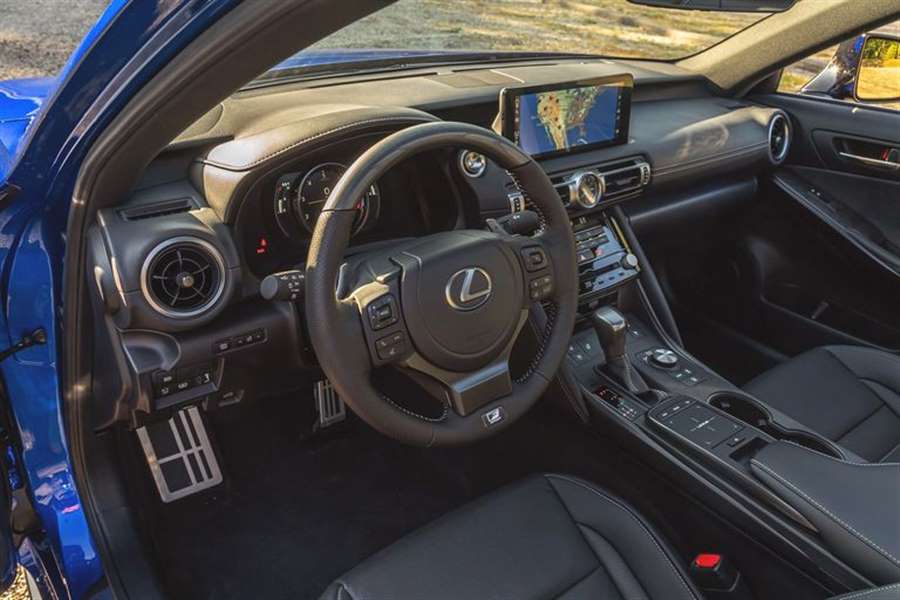
HIGHS: Stunning curb appeal, tasteful interior, comfortable seats.
While the IS's looks will please your optic nerve, the segment is one that emphasizes performance. Beneath the hood of the rear-wheel-drive IS350 F Sport is Lexus's familiar 3.5-liter V-6 producing a naturally aspirated 311 horsepower and 280 pound-feet of torque. Against turbocharged fours and sixes, the V-6 seems a step behind the times. The engine lacks the low-rpm shove that comes from most turbocharged mills, and the eight-speed automatic delivers lackadaisical shifts. Acceleration to 60 mph takes 5.6 seconds, and the quarter-mile is gone in 14.2 seconds at 100 mph. While those numbers would have been good a decade ago, today the IS350 F Sport finds itself competitive with the base turbocharged inline-fours offered in its class. For a sedan with such seductive looks, it deserves an updated V-6 with more power.
In an effort to improve handling, Lexus has also retuned the chassis. There are additional welds in the unibody to strengthen the structure, aluminum control arms replace steel ones, springs and anti-roll bars have been lightened, and a switch to lug bolts instead of nuts saves two pounds. Our test car arrived with the $4200 Dynamic Handling package that includes lightweight 19-inch BBS wheels that shave a claimed 16 pounds, adaptive dampers, and a Torsen limited-slip rear differential.
LOWS: A naturally aspirated V-6 in a world gone turbo, chassis shows promise but is held back by an overly vigilant stability control system.
All of the changes sound great on paper, but on the street there's still some structural flimsiness and the steering isn't as precise as the CT4-V's or the G70's. Lexus fits Bridgestone Potenza S001L summer rubber that seems tuned more for comfort than all-out grip. There's also the matter of a stability-control system that reactivates itself above 30 mph. This car's 0.89 g of stick on the skidpad is far from noteworthy. A Camry TRD outgrips the IS350 on the skidpad. Standing on the left pedal at 70 mph stops the IS350 in a competitive 155 feet, but the force of the stop seemed to trigger a low-oil pressure alert. This isn't something we've experienced with this engine before, so it may be a pre-production bug.
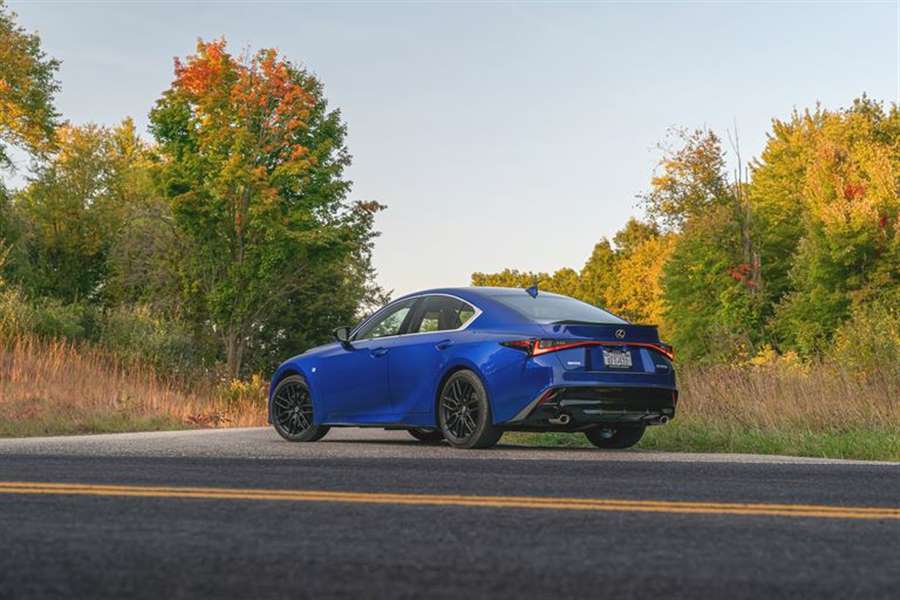
We found few problems with the tastefully appointed cabin. Supple leather and wood trim dress up the revised dashboard. The seating position and comfort of the bucket seats is spot on, but our enthusiasm wanes when we start using the infotainment system's touchpad. Though Lexus remains dedicated to fitting the haptic pad to operate the infotainment system, it's easily avoided by using the standard 8.0-inch or optional 10.3-inch touchscreen. Mounted nearly six inches closer than before, they're an easy tap away. Technophiles will find solace now that Amazon Alexa, Android Auto, and Apple CarPlay compatibility are standard.
The good news for IS350 buyers, is that its $43,925 starting price is $2475 less than last year's IS350 F Sport. A looker inside and out, the low-stress V-6 could definitely use more muscle and the handling could be more engaging and fun. Add in our car's as-tested $55,200 price, and we were in a less forgiving mood. A new engine would go a long way toward helping the IS sedan stay off death row.
Source: caranddriver.com
2020 BMW X3 xDrive30e First Test: Worth Every Penny?
Not the fastest or most efficient, but its cost could pencil out.
Usually when you face a choice between a conventional gas or plug-in hybrid SUV or car, the PHEV struggles to save enough fuel to offset the cost of the battery, motor, and all that extra copper. For some drivers, the BMW X3 xDrive30e might just pencil out. But will it kill your soul while doing so?
How The BMW X3 XDrive30e Plug-In Hybrid SUV Can Pay For Itself
Changing the "i" at the end of that model designation to an "e" costs $4,600. For that, you get a 107-hp/77-lb-ft electric motor sandwiched between your engine and transmission, which boosts the 2.0-liter turbocharged I-4 engine's output to 288 hp and 310 lb-ft. (In the xDrive30i it makes 248 hp and 258 lb-ft.) You also get a hefty 12-kWh battery pack capable of propelling the X3 on battery power alone for an EPA-rated 17 miles. When driving in that mode, the EPA rates it at an impressive 59/61/60 mpg-e on its city/highway/combined cycles, but the added weight of all this equipment (782 pounds on our scales) means that when that battery gets depleted, it gets the same fuel economy as the six-cylinder X3 M40i (21/27/24 mpg).
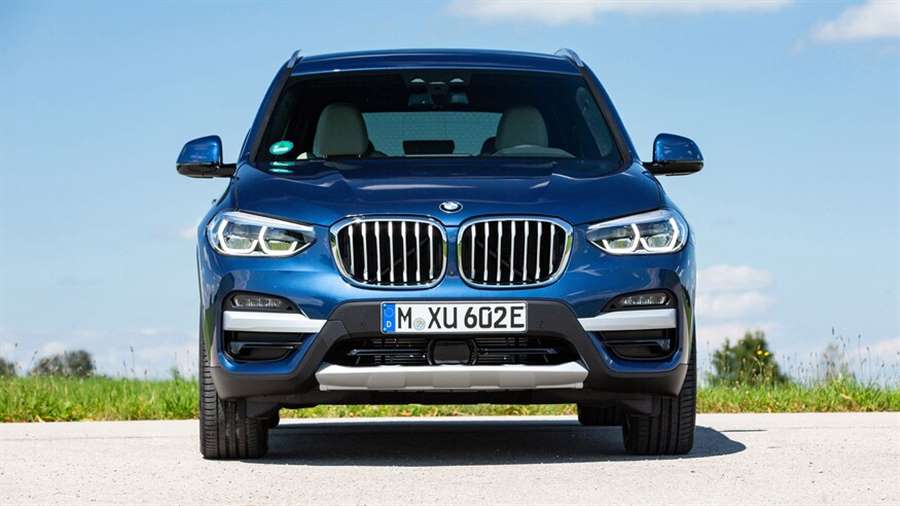
Here's how you can make the X3 xDrive30e pencil out in terms of fuel costs alone, using the five-year, 15,000-miles-per-year (41 per day) ownership model our partners at IntelliChoice developed. First, you need to plug in every night and drive at least 17 electric miles every day. Doing that, using national average costs for electricity and premium fuel of 13.19 cents/kWh and $3.08/gallon, the 17 daily miles add up to $2,292 over five years, and the remaining 24 miles/day will cost $5,808, for a total of $8,100—$783 less than IntelliChoice's $8,883 fuel cost for the X3 xDrive30i, and nowhere near our $4,600 target. But suppose you commute 17 miles each way to a generous, planet-loving employer offering free EV charging*? Now 34 miles per weekday (plus 17 daily miles on the weekends) costs your household that same $2,292, while the remaining 4,392 miles are gas only, costing $2,900, for a total of $5,192—a fuel savings of $3,691 relative to the xDrive30i. That's 80 percent of the cost difference. Drive it another year or two and you're there—less, if IntelliChoice finds the depreciation to be less for the PHEV model (full cost of ownership data is incomplete for this model).
This electrified SUV is "massive," but it's a low, road-hugging, rear-biased (43/57 front/rear percent) mass. The added electrification nearly maintains the xDrive30i's weight-to-power ratio (17.4 lb/hp versus the gasser's 17.1), but because of the electric motor's strong low-end torque (its peak lasts from 0-3,170 rpm), it accelerates considerably quicker. The 60-mph dash takes just 5.4 seconds en route to a 14.5-second, 98.1-mph quarter mile. That roughly lands the xDrive30e neatly between the non-electrified four and six-cylinder X3s. The xDrive30i's stats are 6.3 seconds and 14.8 at 92.6; the M40i's are 4.8 and 13.4 at 103.7. This result is particularly remarkable given that the hybrid's GA8P75HZ transmission features unique gearing that pencils out slightly taller (more efficiency minded) than the shared gearing of the gas models.
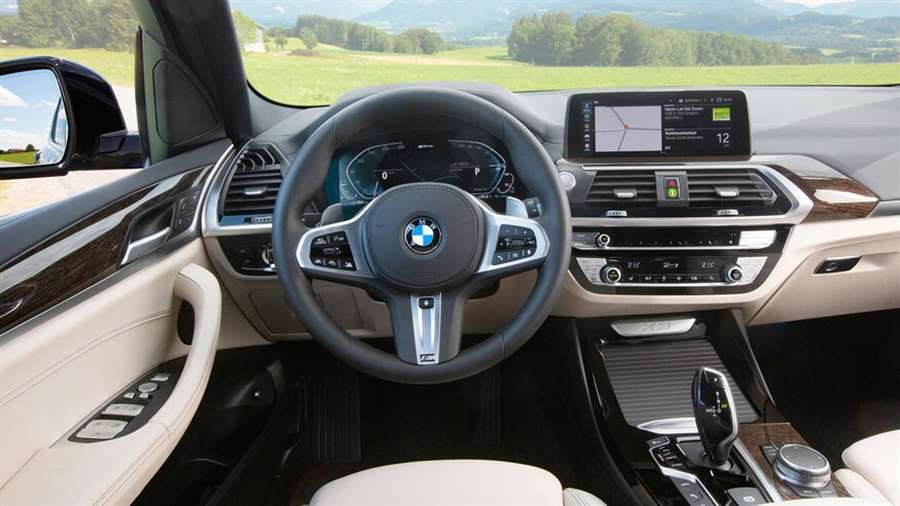
As with most BMWs, fiddling with the drive modes alters the mood of the vehicle substantially. Naturally, there's a fully electric mode that allows fuel-free motoring up to 84 mph; a hybrid mode can remain fully electric to 68 mph, while the EcoPro, adaptive, and sport modes ratchet up the driving fun as in the X3's sisterships.
Is The X3 XDrive30e Any Fun To Drive?
Our test sample was kitted out for peak driving fun, with the M Sport 2 and Dynamic Handling packages and shod in 20-inch Pirelli P Zero summer run-flat tires. As such, it smokes the braking and lateral-g performance of our last X3 xDrive30i (on 19-inch Bridgestone Dueler H/P Sport all-season tires). It out-brakes our long-term M40i, doing 60-0 mph in 110 versus 112 feet, and even manages a bit more max-lateral grip (0.89 to 0.84 g), and that one wore 21-inch Bridgestone Alenza summer tires. Had we been able to perform our figure-eight test in Michigan, it surely would have logged a low-26-second lap. So yes, there is typical car enthusiast fun to be had at the helm. There's also geek-fun to be had paging through the many performance- and economy-oriented screens and displays available in the cluster, the central screen, and the head-up display.
How Does The BMW X3 XDrive30e Compare With Its Rivals?
Sadly, we have no official experience with this X3's obvious plug-in competitors—the similarly sized Audi Q5 55 TFSI e and the Mercedes-Benz GLC 350e—so we're ill-equipped to compare them. The Audi and BMW are rated to tow 4,400 pounds, and the Mercedes can only manage 3,600 if that helps in the elimination process. Otherwise, on paper these two competitors cost more to start with—$52,995 for the Audi and $52,895 for the Benz compared to $49,545 for this X3—but their extra cost buys extra output and economy. Their electrified 2.0-liter drivetrains make more power and torque—362 hp/369 lb-ft for the Audi and 320 hp and 413 lb-ft for the Mercedes—so odds are they'll be quicker. They also get higher EPA ratings: 64/66/65 mpg-e (25/29/27 mpg on gas only) for the Audi and 67/70/68 mpg-e (23/28/25 mpg, gas) for the Mercedes. Those cars boast 2-4 additional miles of electric range, too. Of course, the premium you pay for the PHEV hardware is also steeper, so making the saved fuel costs pay off the premium might require an unreasonable amount of mooched electricity.
Source: motortrend.com
Lexus UX SUV review
"The economical Lexus UX looks and feels great, but falls short on versatility"
The premium compact SUV class is growing rapidly at the moment. Buyers can't get enough of fashionable crossovers such as the BMW X2 and Audi Q2. 'Hybrid' has become something of a buzzword, too, so a hybrid premium compact SUV really ought to be a sales sensation.
This is what Lexus, the upmarket arm of Toyota, hopes for its all-new UX 250h. It's the smallest SUV the company has yet offered, slotting beneath the Lexus NX in the brand's line-up and offering an alternative to its other hybrid model, the more conventionally styled Lexus CT hatchback. It'll also compete against the Jaguar E-Pace and Volvo XC40, while potentially persuading would-be Toyota C-HR buyers to push a little further upmarket.
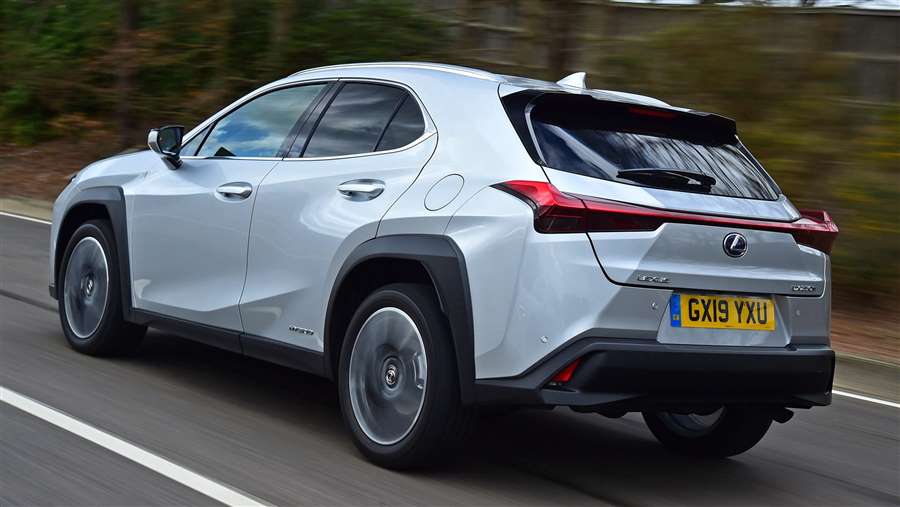
It comes as no surprise that Lexus should opt for hybrid power in its smallest SUV – the larger Lexus RX was something of a pioneer, offering hybrid power since 2004. The technology has since made big leaps forward in fuel-efficiency, though, and Lexus claims some fairly startling economy figures for the smaller, lighter UX. Modest CO2 emissions figures should make the UX an attractive proposition for company-car users, too.
Externally, the Lexus UX wears the brand's trademark 'spindle' grille, but isn't quite as bold and outspoken as the larger Lexus NX. The overall shape has the sleek silhouette of the latest coupe-SUVs, and despite its tough-looking black wheelarch mouldings, the stance is more soft-roader than go-anywhere vehicle.
That streamlined shape is reflected inside, where interior headroom is more saloon than SUV and the driving position is only a little higher than a typical family hatchback. Boot space is rather meagre, too, so this might be a crossover more suitable for couples than larger parties.
Although some may miss the lofty perch that other SUVs can provide, many will enjoy the UX's sporty driving position; there's no doubt it contributes to the driving experience, which feels a little more involving than some rivals. It just goes to show how capable Toyota's TNGA platform – also found under the Toyota Prius hybrid and latest Toyota Corolla – really is. Four-wheel drive is also offered in the UX 250h hybrid, badged E-Four, but we wouldn't recommend this version unless you really need extra traction in winter, because it makes the car less efficient.
Touted as a cutting-edge product at launch, the UX ticks all the usual safety boxes with autonomous emergency braking, lane-departure warning, traffic-sign recognition and automatic headlights. There's a radar cruise-control system, too, with a mode for use in stop-start traffic at up to 18mph.
Lexus proudly occupies the number-one slot in our 2020 Driver Power owner satisfaction survey, even though the brand's three-year/60,000-mile warranty is less generous than Toyota's.
If you'd rather a longer warranty, the Toyota C-HR hybrid remains a less expensive – and slightly more spacious – alternative to the Lexus UX, but many will find the latter's extra style and interior appeal worth the extra outlay. High-mileage private buyers may find conventional diesel-powered rivals, such as the BMW X1 sDrive18d, will be cheaper to run, too.
Lexus UX MPG & CO2
The Lexus UX 250h uses the very latest hybrid technology that Toyota has to offer, having much in common with the latest Toyota Prius. Official WLTP figures span from 50.4 to 53.2mpg for the standard UX and 47mpg for the four-wheel drive version. We managed 50mpg in a test car, despite the big 18-inch alloy wheels included with the F-Sport trim level.
Stick with two-wheel drive and the Lexus UX emits from 120g/km of CO2 with 17-inch wheels fitted and 126g/km with 18-inch alloys. Benefit-in-Kind (BiK) liability for company-car drivers spans from 27 to 28%. Emitting around 135g/km, the four-wheel drive UX sits in a higher BiK band with either size wheels.
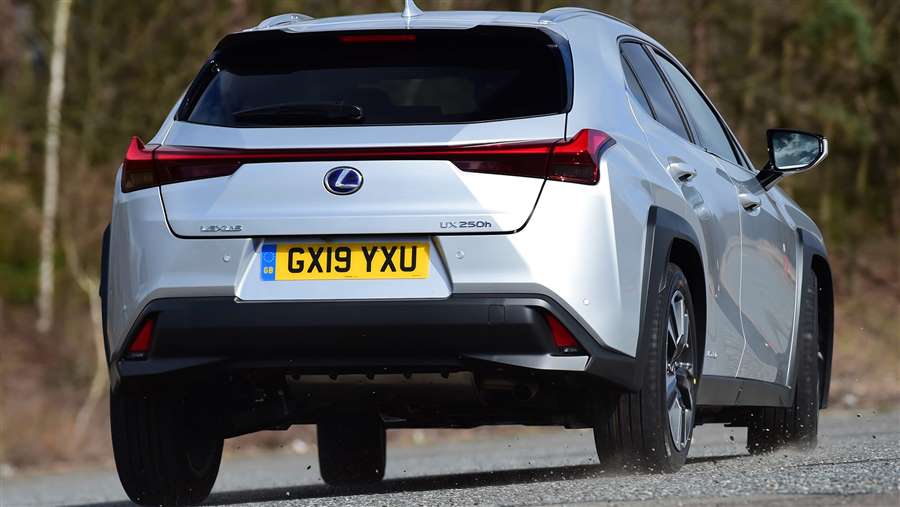
Insurance
The Association of British Insurers has placed the Lexus UX in insurance groups 22 to 26 out of 50, making the Lexus a little more expensive to insure than the cheaper but mechanically related Toyota C-HR hybrid, which occupies insurance group 14 in top-spec Excel form. Meanwhile, the most economical Mercedes GLA is in insurance group 21, while the BMW X1 starts in insurance group 26.
Servicing
Lexus offers fixed-price servicing for all models. Although pricing for the UX has yet to be announced, service schedules are sure to match the pattern of other hybrid models in the range, with a major service every 20,000 miles and an intermediate oil-change service every 10,000 miles.
Warranty
Lexus' three-year/60,000 mile warranty closely matches that provided by Volkswagen and Audi, but falls behind the three-year/unlimited-mileage warranties of Mercedes and BMW. It also lags behind that provided by Toyota, which lasts for five years or 100,000 miles. Lexus can provide an extended warranty, though, keeping you covered once your original policy's age or mileage limit is breached. It's also worth noting that the hybrid powertrain comes with a five-year/60,000 mile warranty for extra peace of mind.
The Lexus UX 250h uses a platform known as Toyota New Generation Architecture (TNGA), which underpins a range of cars as diverse as the Toyota Prius, Toyota Corolla and Toyota C-HR. That fact might not scream 'sporty', but prospective Lexus UX purchasers are in for a pleasant surprise.
Sitting in a driving position somewhat lower than that of most compact SUVs, you're well placed to get the most out of how the Lexus handles. That's no empty gesture, either, because the UX really does offer enough driving involvement to be a pleasure to drive. The steering is accurate and has a pleasingly weighty feel, while strong grip helps confidence in sharp corners.
Lexus claims to have gone to some lengths to make the UX feel good to drive, taking the trouble to mount the steering rack directly to the chassis in an effort to reduce flex and vibration, and these efforts have definitely paid off; the UX is more fun to drive than the Audi Q2 and runs the BMW X2 close. What's more, the car's impressive resistance to lean in corners doesn't come at the expense of a hard ride, at least not with the optional adaptive damping system fitted. We've yet to evaluate how the standard suspension deals with road imperfections.
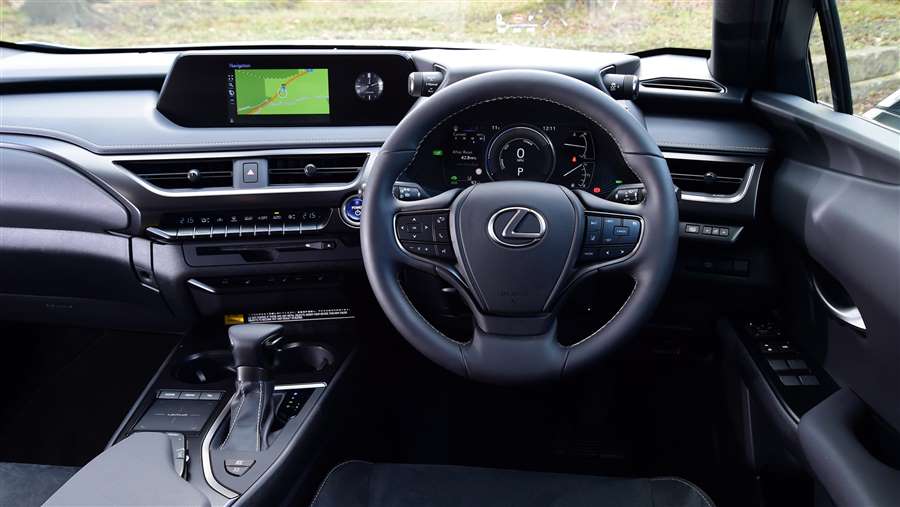
The UX is available with either front-wheel drive or 'E-Four' all-wheel drive, but the latter is intended more to maximise traction on poor roads and in adverse weather conditions than to bestow the UX with real all-terrain ability. For most buyers, we'd recommend saving the £1,200 or putting it towards a set of winter tyres for the front-wheel drive version.
Lexus UX hybrid engine
Only one engine is offered for the Lexus UX – the 250h. It's billed as a 'self-charging' hybrid, but that tag is little more than a positive spin on the fact that it has no plug-in facility. As a result, the UX can only move under all-electric power at moderate speeds, but it does bring a welcome degree of quietness in urban traffic.
The four-cylinder 2.0-litre petrol engine produces 144bhp and twin electric motors contribute 108bhp, making 0-62mph possible in 8.5 seconds. It feels quicker off the mark than the Audi Q2 fitted with a 1.5-litre turbo and driving is effortless thanks to a CVT automatic gearbox that proves smooth and seamless in operation. Unusually, the paddles either side of the steering wheel aren't for changing gear, but for setting the rate of regenerative braking. This system uses energy released during deceleration to help charge the UX's hybrid battery.
The E-Four four-wheel drive version gets an extra motor for the rear wheels, providing up to 7bhp and 55Nm of pulling power but also adding 60kg of weight. In most driving situations it feels identical to the front-wheel drive version, with enough electric assistance to prevent the petrol engine from feeling overworked. However, with less weight, the standard UX can run in EV mode more often, so unless you park on a slippery field or track every day, the benefits are marginal.
Interior & comfort
The Lexus UX looks and feels great inside
The Lexus UX is generally smooth and relaxing to travel in. At higher cruising speeds, its slippery shape helps to keep wind noise at bay, and occupants will find tyre noise far more intrusive than any other mechanical sound. The clever (optional) active damping system is effective at ironing out road bumps, but we've yet to try the standard suspension.
Lexus has established an enviable reputation for interior design and quality, and the UX doesn't disappoint. The materials used are from the top drawer, and the layout is distinctive and pleasing to look at. Enthusiasts might even spot a few visual influences from the range-topping Lexus LC sports coupe.
Lexus UX dashboard
The UX's dashboard sweeps around the driver, who's placed right in the centre of the action. The instrument cluster is a little smaller than that of some rivals, but its seven-inch digital display is clear and easy to understand and can be configured to your taste.
Lexus UX interior19
Major features, such as the climate-control system, are easy to use thanks to piano-style buttons in the centre console. However, we remain unconvinced by the touchpad system that Lexus employs for its infotainment systems. It's fiddly to use when at a standstill, and worse when you're on the move. There's no Apple CarPlay or Android Auto on board, either, but the wide central touchscreen looks great.
Equipment
The UX is available in three trim levels. The entry-level model is simply the UX, followed by F Sport and top-spec Takumi.
The UX comes with sat nav, dual-zone air-conditioning and 17-inch alloy wheels, along with compatibility with Android Auto and Apple CarPlay. The F Sport has sporty styling extras to give it a more muscular appearance, as well as 18-inch alloy wheels, sports seats, pedals and steering wheel. The trim level also includes heating for the seats and steering wheel, plus tinted rear windows. There's also the option of Active Sound Control (ASC), which "generates the aural effect of up and downshifts like those of a geared automatic transmission". In common with other cars that offer a digitally synthesised engine noise to increase aural stimulation, the F-Sport is available with Sonic Interaction Design (SID). It allows you to tailor the 'engine sound' when Sport S+ mode is engaged.
The Takumi version of the UX features leather upholstery, ventilated seats, a Mark Levinson 13-speaker sound system, a 10-inch multimedia display, 360-degree camera, driver’s head-up display, sunroof, blind spot monitor and rear cross traffic alert.
Options
Five option packs are available for the UX. The Premium Pack (available for UX and F Sport trims) includes 18-inch alloy wheels, front and rear parking sensors, rear privacy glass, integrated heating in the front seats and steering wheel and an auto-dimming rear-view mirror.
Taking luxury specification to an even higher level, the Premium Plus Pack adds leather upholstery, smart entry, a powered tailgate and illuminated entry system. F Sport buyers also get a 10-inch multimedia display and power-adjustable steering wheel as part of the pack.
Introduced for 2020, there's also a Premium Pro Pack. This includes the kit in the Premium Plus Pack and adds blind-spot monitoring, rear cross traffic alerts, a head-up display, adaptive LED headlights, a 13-speaker Mark Levinson stereo, wireless smartphone charging and power adjustable seats.
The Tech & Safety Pack equips the car with a blind spot monitor, rear cross traffic with auto brake, triple-eye LED headlights, a driver’s head-up display and a wireless charging tray for smartphones. The F Sport model also gets adaptive suspension as part of this pack, which provides automatic, independent, damping force at each wheel in response to driver inputs and road conditions.
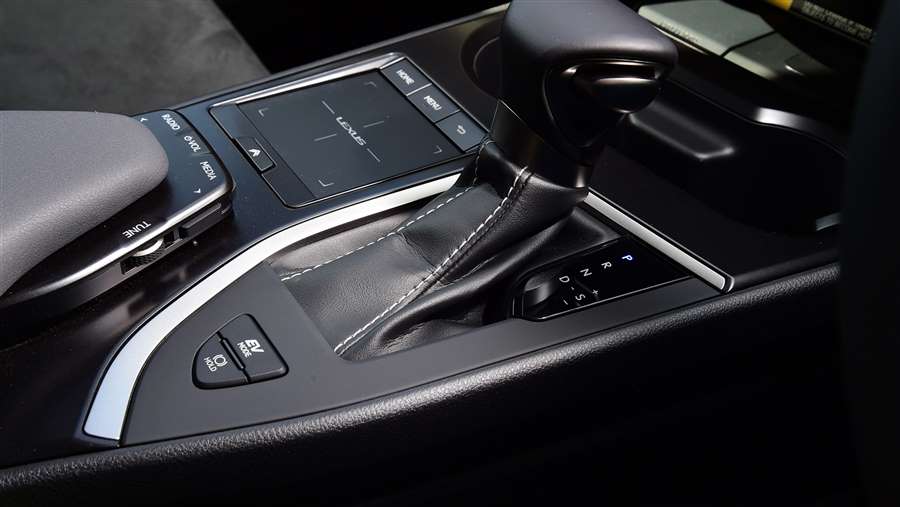
The UX model is available with a Tech & Sound Pack that equips the vehicle with the Mark Levinson audio system, head-up display, wireless charger and power-adjustable front seats and steering wheel.
The F Sport model is available with a Takumi Pack, which includes everything in the Premium Plus and Tech & Safety Packs, together with front seat ventilation, the Mark Levinson audio system, a sunroof and 360-degree camera. If you want to inject some extra flair, there's also a new ‘Cobalt’ blue trim colour for 2020, as well as an ‘F White’ colour scheme with contrasting black and white leather for the seats and dashboard.
Practicality & boot space
The Lexus UX is reasonably spacious for passengers, but boot space is tight
The restrictions enforced by the Lexus UX's compact overall dimensions presented its designers with a major challenge when it came to interior packaging, and the sleek crossover is further hamstrung by its low, curvaceous roofline. As a result, although space inside is adequate, there's no mistaking the Lexus UX for a versatile family car.
Lexus UX interior space & storage
Front-seat passengers get by far the best deal inside the UX, where the wraparound dashboard gives the driver a cocooned feeling without claustrophobia setting in. There's more headroom than you might expect, thanks largely to the low-set seats.
The same is true in the back, but the narrow windows don't let a great deal of light in. It means rear-seat passengers get the impression of there being less space than there actually is, and most will actually find knee and headroom adequate.
Boot space
With a high floor, boot space is just 320 litres - a small size for the class and 150 litres less than the BMW X2 offers. Things get even worse with four-wheel drive fitted, because the extra mechanical hardware reduces boot space to 283 litres - less than you get in a Ford Fiesta.
The rear seats fold with a 60:40 split should you need to expand the boot without passengers on board, but the steeply raked rear windscreen puts paid to the notion of carrying bulky items.
Source: carbayer.com

